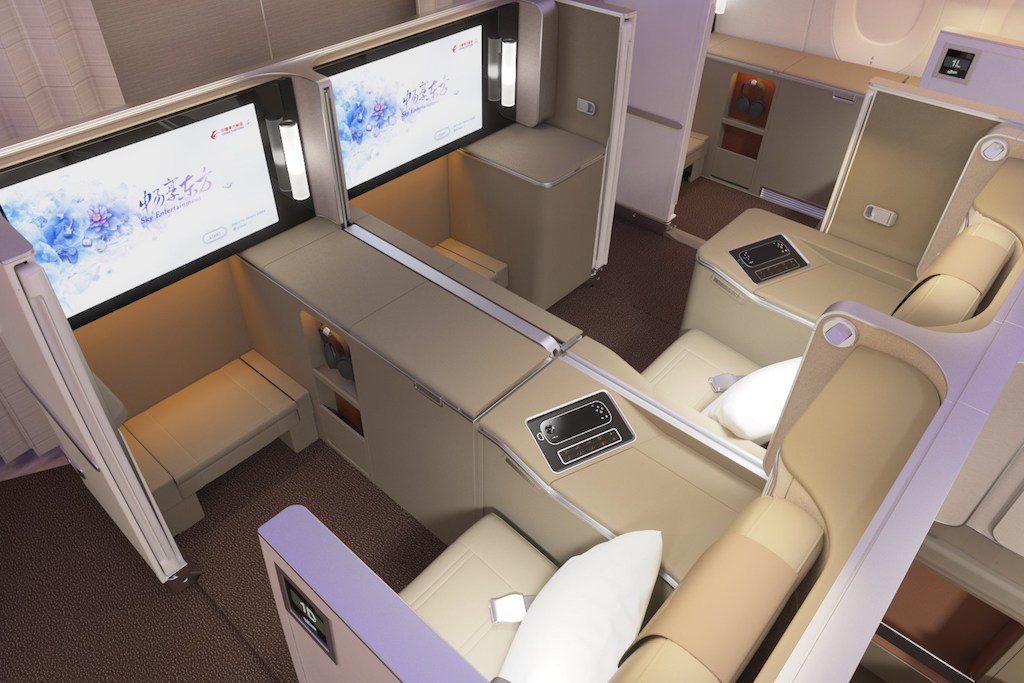Skift Take
We know first class is on the way out on routes between the biggest business cities. But do travelers want a better-than-business option at a reasonable price?
Do you remember the simplicity of airline economy class? Two decades ago, most airlines had a single cabin, and all seats had the same service, pitch, and width.
No longer. Sophisticated airlines have several sections, such as premium economy, economy with extra legroom, and regular seats. Some even set aside rows with reduced legroom for their most cost-conscious customers.
In business class, though, everyone receives the same service, food, and other goodies. Some airlines charge extra for more desirable seats, but otherwise, the product is standard.
What if there was another way?
As I wrote Tuesday, two Asian airlines are experimenting with a business class-plus experience, offering better seats and service to customers who pay more. Malaysia Airlines calls its product the business suite, while China Eastern uses the name premium business. In each case, the product essentially replaces first class.
This could just be a blip. Or it could be the start of a new era of business class segmentation, said Samuel Engel, a head of the aviation practice at ICF, a consulting firm. We saw this play out in coach. Why not in business? “The natural evolution of this trend of segmentation should also include new segments above business and below first class,” he said.
What do you think? Will we see more segmentation in business class?
— Brian Sumers, Senior Aviation Business Editor [[email protected], @briansumers]
Best of Skift
Asian Airlines Turn to Super Business Suites Rather Than First Class: Malaysia Airlines was having trouble selling first class because its product couldn’t compete. It is now selling the cabin as a business suite product. It is priced cheaper than long-haul first, but has many of the same perks. Will it work? Might as well try.
The Megatrends Defining Travel in 2019: Every year, Skift comes up with a list of major trends for travel for the coming 12 months, and we produce a magazine about them. My contribution this year is a piece about long-haul, low-cost airlines. You can download the full magazine for free.
Aeromexico Made a Highly Relevant Video Ad That’s the Opposite of Divisive: Aeromexico has been struggling in the U.S. market, and while it’s easy to blame the Trump administration, there are probably other factors. Last week, the airline released a long commercial for U.S. travelers that pokes fun at some of their fears about Mexico. Have you watched it? Skift’s Issac Carey has some background on the strategy.
United’s Focus on Revenue Gains Gives It an Edge Over Rivals: United President Scott Kirby and Chief Commercial Officer Andrew Nocella, who worked together at US Airways and American Airlines, deserve credit for the airline’s turnaround. Then again, when they arrived United was a broken company, so there was probably only one way to go — up.
Recession Watch: The Debt Load of the Travel Industry’s Public Companies: Skift Executive Editor Dennis Schaal examined the debt carried by various travel firms. Among larger U.S. airlines, American Airlines carries more than its competitors. “In the event of a recession, debt loads would be one critical factor among many in hamstringing or contributing to a company’s ability to maneuver,” Schaal writes in his Skift Take.
Best of the Rest
Why You Should Think Twice Before Drinking Airplane Coffee: Your newsletter author is a coffee snob. He makes pour-over coffee each morning, using beans delivered weekly via UPS. He doesn’t drink a lot of airplane coffee. “Almost all airline coffee is bad,” he said in this Thrillist story. “A lot of it is disgusting.”
Brexit Forces Airline Caterer to Stockpile In-Flight Meals: If the UK goes through with a hard Brexit, it will be a disaster for many businesses. But at least airline passengers will be fed, short-term. According to Bloomberg, catering companies are already in preparation mode. “Gate Gourmet, which serves 20 airlines at 10 UK airports, is accumulating enough pizza, ice cream, and roast duck (for business class) to see passengers through about 10 days of disruption,” the story states.
The Best and Worst U.S. Airlines of 2018: The Wall Street Journal has its annual rankings of the top U.S. airlines, and once again Delta Air Lines is the winner. Sometimes airlines can get complacent when they’re repeatedly the best of the bunch, but that isn’t happening with Delta.
Airlines Prioritize New Technologies as They Position Themselves for the Future: Airlines are often slower than other industries to innovate, but that’s changing, Bloomberg reports. In this story, Bloomberg explains how airlines are adopting new technologies to make the travel journey easier.
Stocking Up at an Airline’s Garage Sale: The New York Times has discovered the Aviation Geek. Like sports fans who crave game-worn jerseys, these people want to get their hands on decommissioned airline stuff, from seats to silverware to dishes. The Times attended a Delta Air Lines sale recently in Atlanta and published a feature on it. These feature stories write themselves. I should know. I wrote one a few years back for L.A. Weekly.
Contact Me
Skift Senior Aviation Business Editor Brian Sumers [[email protected]] curates the Skift Airline Innovation Report. Skift emails the newsletter every Wednesday. Have a story idea? Or a juicy news tip? Want to share a memo? Send him an email or tweet him.
The Daily Newsletter
Our daily coverage of the global travel industry. Written by editors and analysts from across Skift’s brands.
Have a confidential tip for Skift? Get in touch
Tags: airline innovation report, business class, china eastern, malaysia airlines, segmentation
Photo credit: China Eastern Airlines has dropped first class on its Airbus A350s, in favor of premium business. China Eastern Airlines
